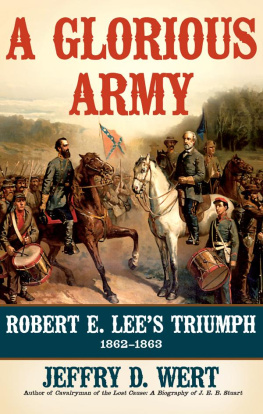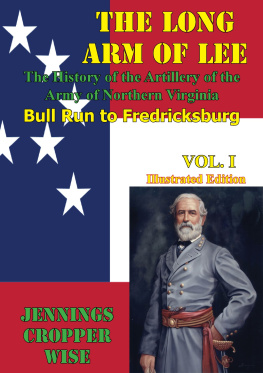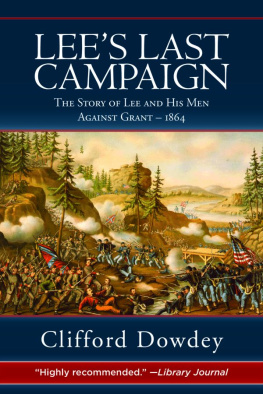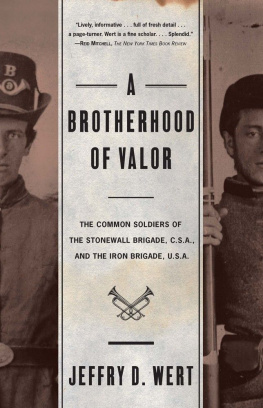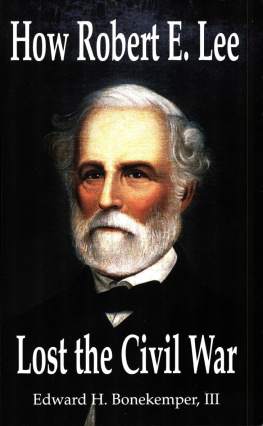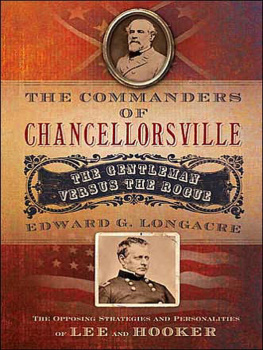BATTLE DIGEST
Lessons for Todays Leaders Volume 1 * Issue 7
American Civil War:
Chancellorsville
Date
May 1-5, 1863
LOCATION:
Chancellorsville, Virginia
OPPOSING FORCES
Union Army of the Potomac: 134,000 infantry, cavalry, and artillery under the command of Maj. Gen. Joseph Hooker. Corps commanders were Maj. Gens. John Reynolds (I Corps), Darius Couch (II Corps), Daniel Sickles (III Corps), George Meade (V Corps), John Sedgwick (VI Corps), Oliver O. Howard (XI Corps), Henry Slocum (XII Corps), and George Stoneman (Cavalry Corps).
Confederate Army of Northern Virginia: 60,000 infantry, cavalry, and artillery under the command of Gen. Robert E. Lee. Corps commanders were Lt. Gen. Thomas J. Stonewall Jackson (II Corps) and Maj. Gen. J.E.B. Stuart (Cavalry Corps). Major Gen.Jubal Early also played a key role. Lt. Gen. James Longstreet and most of his I Corps would not participate in the battle.
HISTORICAL SIGNIFICANCE
The Confederate victory at the Battle of Chancellorsville is considered the crowning military achievement of Gen. Robert E. Lee. Against the numerically superior Union Army of the Potomac, Lee took a calculated risk by dividing his Army of Northern Virginia in what would become the largest flanking maneuver of the Civil War. The risk paid off with a stunning victory.
Chancellorsville remains a classic example of battlefield audacity and innovation and offers a study in contrasting commands. While Lee was bold and offensive, trusting key subordinates like Lt. Gen. Thomas J. Stonewall Jackson to carry out his plan, Maj. Gen.Joseph Hooker was timid, forcing his subordinates into defensive postures. Yet, the Confederate victory was costly. Lee suffered losses that were becoming harder to replace. He also lost Jackson, his most capable commander, who was fatally wounded by friendly fire.Nevertheless, with his victory, Lee gained sufficient confidence to plan an invasion north toward Gettysburg two months later.
STRATEGY & MANEUVER
Actions by the Union By early 1863, President Abraham Lincoln was frustrated with the Army of the Potomacs lack of success. Not only had a succession of commanding generals failed to achieve a decisive victory, but the reputation of Confederate invincibility and the superior generalship of Robert E. Lee cast a long shadow across the entire Union war effort. In January, Lincoln elevated Hooker to assume command. Hooker wasted no time making important improvements to the army. He also vowed to defeat Lee and capture the Confederate capital at Richmond.

Two previous offensive campaigns, under Gens. George B. McClellan and Ambrose Burnside, had failed to seize Richmond from the east or north. Burnsides recent frontal assault at Fredericksburg had been especially costly. Hookers plan was different. He would fix Lees force at Fredericksburg with two corps (I, VI), while he moved three corps (V, XI,XII) northwest across the Rappahannock and Rapidan rivers to envelop Lees rear. Meanwhile,II and III Corps would support the Union right flank, shorten the lines of communication between the two wings, and create diversions. All the while, Maj.Gen. George Stonemans cavalry corps would threaten Lees lines of communication toward Richmond. (

On 27 April, three Union corps (V, XI, XII) moved northwest up the Rappahannock, while Maj.Gens. John Sedgwick (VI) and John Reynolds (I) with 40,000 troops moved south of Fredericksburg to demonstrate against the Confederate right flank. Maj. Gen. Daniel Sickles III Corps remained in place, in full view of the defenders, to hold their attention. Stoneman, meanwhile, led the cavalry south.
Two days later, on the 29th, 54,000 Union soldiers crossed the Rapidan and began closing in on Lees rear. As they converged on the Chancellor mansion later that day, an additional two divisions from Maj. Gen. Couchs II Corps also closed in from the east. Hookers bold plan was working a large portion of his army had just maneuvered behind Lee. But Hooker became cautious. Deciding to wait until all five of his converging corps could concentrate around Chancellorsville, he ordered a halt. It was a costly decision.
Actions by the Confederacy Things started quietly as the Army of Northern Virginia emerged from winter quarters in 1863. Lee still held Fredericksburg and guarded the rail line toward Richmond. A lack of Federal activity allowed Lee to send Lt. Gen. James Longstreet and most of his I Corps southeast to requisition supplies for the army. (It was a decision that would take them out of the coming fight.)
Lees strategy remained defensive to prevent the Army of the Potomac from capturing Richmond. He had defeated successive Union generals by keeping his army between them and the capital city. His recent victory at Fredericksburg had demonstrated the effectiveness of his approach.

Map 1: Fighting Joe Hookers Campaign Plan.
On 27 April, as Hooker began his campaign, Lee was aware that something was afoot. On the 29th, he dispatched Maj. Gen. Richard Andersons division to the west to guard his rear and provide early warning. Because Maj. Gen. J.E.B. Stuarts cavalry had effectively shadowed Hooker from the start, Lee had a clear picture of what the Union commander was up to by the morning of the 30th. Thats when he ordered Jacksons II Corps to move west. Lee wasnt going to conform to Hookers plan. Instead of retreating or moving his army away from Fredericksburg, he did the unexpected. He divided his already outnumbered army and sent most of it to attack Hooker.
As Lee turned west, he left Maj. Gen. Jubal Early with only one reinforced division to stand against two Unions corps at Fredericksburg. It was a bold decision.
TACTICS OF THE BATTLE
After the preparatory maneuvering, the Battle of Chancellorsville lasted five days. Hooker started on the offense by initiating his turning movement. But Lee quickly turned the tables, forcing a timid Hooker into a series of reactive and defensive moves.
1 May On the morning of 1 May, after Hookers enveloping forces had consolidated around the Chancellor mansion, they began their advance toward Lee. But Lee had already sent Jacksons II Corps and Maj. Gen. Lafayette McLaws division west before dawn. At 1130 hrs., the two forces collided. ( Around 1400 hrs., to the consternation of his corps commanders, Hooker ordered a withdrawal to defensive positions near Chancellorsville. Union forces were to fight a defensive battle at the edge of The Wilderness. It was a crucial mistake.
Lee, meanwhile, used the remaining daylight to probe for weaknesses in the Union lines. Later that night, as Lee and Jackson discussed options, Stuart reported that Hookers right flank (Maj. Gen. Oliver Howards XI Corps) was dangerously in the air. Additionally, a map review revealed the recently cut Catharine Furnace Road that could facilitate a flanking march across the Union front while still offering concealment. When Lee asked Jackson how many troops he would need for the attack, Jackson responded with an assertive, My whole command.
2 May The next morning, Lee again divided his army, sending Jacksons 28,000 troops on a 12-mile flanking march around the Union right. Lee, meanwhile, remained in front of Hookers army with only 13,000 men. As Lee helped position units of Andersons and McLaws divisions, he had much on his mind. He worried about Jacksons march, along with the precarious situation back at Fredericksburg.


